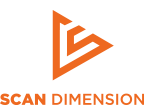3D rendering is the 3D computer graphics process of automatically converting 3D wire frame models into 2D images on a computer. 3D renders may include photorealistic effects or non-photorealistic rendering.
3D rendering is the 3D computer graphics process of automatically converting 3D wire frame models into 2D images on a computer. 3D renders may include photorealistic effects or non-photorealistic rendering.
Shaded - this option addresses how different types of scattering are distributed across the surface (i.e., which scattering function applies where). Descriptions of this kind are typically expressed with a program called a shader. (Note that there is some confusion since the word "shader" is sometimes used for programs that describe local geometric variation.)
Faceted - This displays simple triangles that have been stitched together to form surfaces.Faceted geometry representations are commonly used for graphics, bio-medical, geotechnical and many other applications that output a discrete surface representation.
X-Ray - This option allows you to see beneath the layers.
Wireframes - A wire-frame model is a visual presentation of a (3D) or physical object used. It is created by specifying each edge of the physical object where two mathematically continuous smooth surfaces meet, or by connecting an object's constituent vertices using straight lines or curves. The object is projected into screen space by drawing lines at the location of each edge. The term wire frame comes from designers using metal wire to represent the three-dimensional shape of solid objects. 3D wire frame allows the construction and manipulation of solids and solid surfaces. The 3D solid modeling technique efficiently draws higher quality representations of solids than the conventional line drawing.
Show Normals - This will show the object exactly as it was scanned.
Wireframe Overlay - A wire-frame model is a visual presentation of a (3D) or physical object used. It is created by specifying each edge of the physical object where two mathematically continuous smooth surfaces meet, or by connecting an object's constituent vertices using straight lines or curves. The overlay places it on the scan.
Disable Texture - To create a surface that resembles real life texture mapping is used. This process is similar to adding decorative paper to a white box. In 3D, texture mapping is the process of adding graphics to a polygon object. These graphics can be anything from photographs to original designs. Textures can help age your object, and give them more appeal and realism; however, if you would like this option turned off it can be done in the Viewer.
